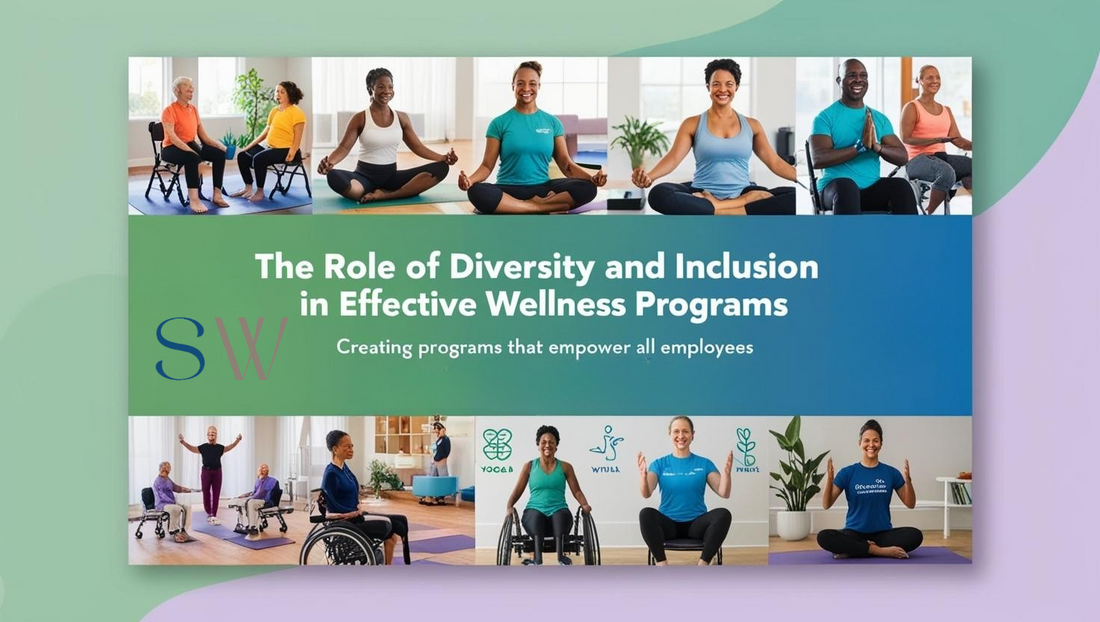
The Role of Diversity and Inclusion in Effective Wellness Programs
Share
In today’s evolving workplace, diversity and inclusion (D&I) are no longer optional—they’re essential. A truly effective wellness program reflects the diverse needs and experiences of employees while fostering an inclusive environment. By incorporating D&I into wellness initiatives, organizations can address health disparities, improve employee engagement, and promote a culture of equity and belonging.
This blog explores how diversity and inclusion enhance wellness programs and why they are critical for achieving holistic health and wellbeing in the workplace.
Why Diversity and Inclusion Matter in Wellness Programs
A one-size-fits-all approach to workplace wellness often fails to meet the needs of a diverse workforce. Employees come from different backgrounds and face unique challenges that influence their health and lifestyle choices. Here’s why D&I should be central to any wellness initiative:
1. Addressing Health Disparities:
Cultural, economic, and social factors contribute to health disparities among employees. Inclusive programs help address these gaps by offering resources tailored to diverse needs.
2. Promoting Engagement:
Employees are more likely to participate in wellness programs when they feel represented and valued. Inclusion ensures that all employees feel empowered to prioritize their wellbeing.
3. Driving Organizational Success:
Diverse and inclusive wellness programs foster a sense of belonging, which translates to higher morale, productivity, and retention rates.
Key Elements of an Inclusive Wellness Program
To create a wellness program that truly resonates, organizations must consider the unique needs of their diverse workforce. Below are the core elements of an inclusive wellness initiative:
1. Culturally Relevant Nutrition Education
Nutrition plays a pivotal role in overall health, but dietary preferences often vary based on cultural traditions. Inclusive wellness programs:
• Offer nutrition workshops that respect cultural dietary practices.
• Provide meal plans and recipes tailored to different ethnic cuisines.
• Promote food options that cater to diverse needs, including vegetarian, vegan, halal, and kosher.
2. Accessibility for All Abilities
Inclusive wellness programs ensure that activities are accessible to employees with varying physical abilities. This includes:
• Offering low-impact fitness classes, such as yoga or chair exercises.
• Providing adaptive equipment or virtual options for remote participation.
• Designing wellness spaces with accessibility in mind.
3. Mental Health Support Across Demographics
Mental wellbeing is influenced by factors such as age, gender, and cultural background. To support employees effectively:
• Include diverse mental health resources, such as multilingual counseling services.
• Host workshops addressing issues like racial trauma, gender-specific stress, and generational challenges.
• Foster a stigma-free environment where seeking mental health support is encouraged.
4. Flexible Scheduling Options
Not all employees have the same availability for wellness activities. Inclusive programs accommodate varying schedules by:
• Offering sessions at different times to suit day, night, and shift workers.
• Providing on-demand wellness content, such as recorded fitness classes and mindfulness sessions.
• Allowing employees to integrate wellness into their workday through flexible scheduling.
Real-World Impact of Inclusive Wellness Programs
Organizations that prioritize diversity and inclusion in their wellness initiatives experience tangible benefits:
• Higher Engagement Rates: Employees are more likely to participate in programs that feel relevant and inclusive.
• Reduced Health Disparities: Tailored resources help bridge the gap for underserved groups.
• Enhanced Retention: Inclusive cultures foster employee loyalty and satisfaction.
A study by the Society for Human Resource Management (SHRM) found that organizations with inclusive wellness programs see a 20% increase in employee engagement and a 15% decrease in absenteeism.
How Soza Wellness Embodies Diversity and Inclusion
At Soza Wellness, we understand that effective wellness programs must reflect the diversity of the individuals they serve. That’s why our offerings include:
• Culturally Adaptable Nutrition Workshops: We provide guidance that respects cultural traditions and preferences.
• Accessible Fitness Options: From low-impact group classes to adaptive exercise routines, our programs are designed for all abilities.
• Mental Health Support: We offer workshops and resources that address the unique mental health challenges faced by diverse populations.
Our holistic approach ensures that every employee feels seen, valued, and supported.
Steps to Build a Diverse and Inclusive Wellness Program
Here’s how organizations can create wellness initiatives that prioritize diversity and inclusion:
1. Assess Employee Needs: Conduct surveys and focus groups to identify gaps in current wellness offerings.
2. Collaborate with Experts: Partner with organizations like Soza Wellness to design inclusive programs tailored to your workforce.
3. Provide Education and Training: Train leaders and employees on the importance of diversity, inclusion, and equity in wellness.
4. Measure Impact: Regularly review participation and outcomes to ensure the program meets the needs of all employees.
Conclusion
Diversity and inclusion are the foundation of effective wellness programs. By addressing the unique needs of a diverse workforce, organizations can promote health, foster a culture of belonging, and achieve sustainable success.
Ready to create a wellness program that celebrates diversity and inclusion? Partner with Soza Wellness to design initiatives that empower every employee to thrive. A healthier, more inclusive workplace starts today.
Experience holistic wellness and self-discovery with the Love, Be Well, and Travel Program, where mindfulness meets adventure—learn more here! 🌿✈️
